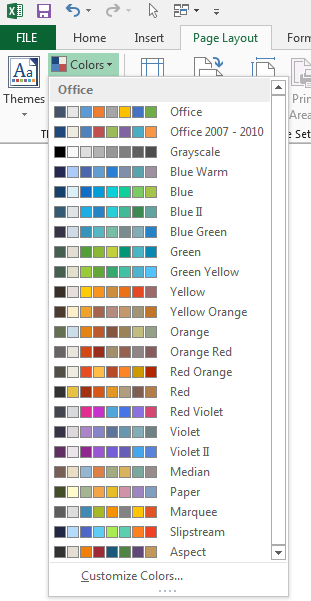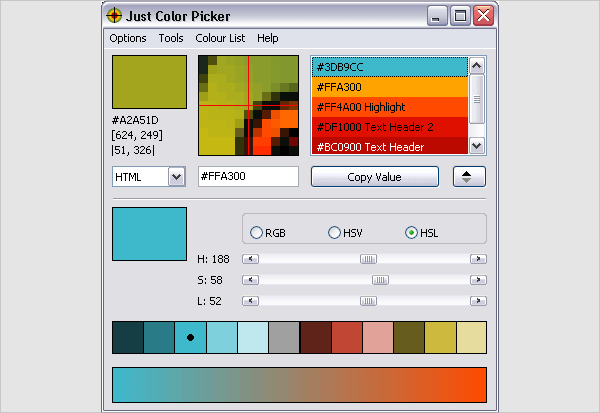

- MICROSOFT ACCESS COLOR PICKER ONLINE UPGRADE
- MICROSOFT ACCESS COLOR PICKER ONLINE CODE
- MICROSOFT ACCESS COLOR PICKER ONLINE WINDOWS
Other options are available' Set m_fileList = Application.FileDialog(msoFileDialogFilePicker) m_fileList.AllowMultiSelect = True m_fileList.InitialFileName = myDefaultFolder m_fileList.InitialView = msoFileDialogViewDetails m_fileList.Title = yourTitle m_fileList.InitialFileName = myDefaultFileName 'we can add a file extension filter serie' 'm_fileList.filters(i) =.' If m_fileList.Show = -1 And m_ > 0 Then For i = 1 To m_ debug.print m_lectedItems(i). Do not forget the fileDialog object, easy, allows multiple selection, fileOpen, folder selection, etc, to be used this way: Dim m_fileList As FileDialog, _ i as long 'my choice here: pick up multiple files. I still can't see how I can achieve what I want with a Datasheet though, if that's what. Sorry - my knowledge of Access is almost non-existent. I'm hoping to add a Color Picker to a field in an Access database table, instead of having to type in numbers manually. Adding a colour picker to a Field in an MS Access 2007 Table? Ask Question 0.

In the Categories list in the Insert Function dialog box, click Date and Time. In the Insert Formula dialog box, click Insert Function. Under Default Value, click Insert Formula. Double-click the date picker that you inserted on the form template. Insert a date picker on the form template.
MICROSOFT ACCESS COLOR PICKER ONLINE UPGRADE
If it breaks after you upgrade your Office version, that's a relatively easy thing to fix.
MICROSOFT ACCESS COLOR PICKER ONLINE CODE
Believe me, you don't want to get into the habit of just copying and pasting code you don't understand.
MICROSOFT ACCESS COLOR PICKER ONLINE WINDOWS
Fenton is right in principle about preferring the Windows API over the Office-specific version, but if this code is way beyond your grasp you may want to stick with what you're familiar with. That's why it doesn't look like any other VBA you've seen. It uses the Windows API, which works just fine in VBA but is really geared toward C and C++ programmers. Private Function VBString(str As String) As String Dim pos As Integer pos = InStr(1, str, Chr(0), vbTextCompare) VBString = Left(str, pos - 1) End Function. Dim of As OPENFILENAME of.lStructSize = Len(of) of.hwndOwner = Access.hWndAccessApp of.hInstance = vbNull of.lpstrFilter = m_strFilter ' *.doc for example of.nFilterIndex = 1 of.lpstrFile = String(257, 0) of.nMaxFile = Len(of.lpstrFile) - 1 of.lpstrFileTitle = of.lpstrFile of.nMaxFileTitle = of.nMaxFile of.lpstrInitialDir = m_strDirectory ' Folder to start of.lpstrTitle = m_strTitle ' Title of dialog window of.Flags = 0 If GetOpenFileName(of) 0 Then filename = VBString(of.lpstrFile) end if Where VBString is a helper function to convert a null-terminated string. Private Type OPENFILENAME lStructSize As Long hwndOwner As Long hInstance As Long lpstrFilter As String lpstrCustomFilter As String nMaxCustFilter As Long nFilterIndex As Long lpstrFile As String nMaxFile As Long lpstrFileTitle As String nMaxFileTitle As Long lpstrInitialDir As String lpstrTitle As String Flags As Long nFileOffset As Integer nFileExtension As Integer lpstrDefExt As String lCustData As Long lpfnHook As Long lpTemplateName As String End Type Then you fill out the structure and call GetOpenFileName. Import Private Declare Function GetOpenFileName Lib 'comdlg32.dll' Alias 'GetOpenFileNameA' (pOpenfilename As OPENFILENAME) As Long You also have to import the OPENFILENAME structure.


 0 kommentar(er)
0 kommentar(er)
